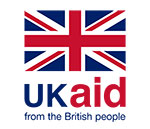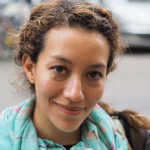Through our previous research, in the GSMA Assistive Tech programme, we learned that mobile phones have the potential to be a life changing technology for persons with disabilities. However, the evidence in the latest Mobile Disability Gap Report 2020, shows that persons with disabilities are still not benefitting from mobile. Evidence shows that mobile disability gap exists in many countries. In all the markets, persons with disabilities are less likely to own a mobile phone, be aware of mobile internet and, overall, use mobile internet compared to non-disabled persons.
A mobile disability gap is evident in all eight markets studied, but it is larger in some countries than others
Although many persons with disabilities own a mobile phone, the gap in mobile ownership between those with and without a disability is evident in all eight markets. Bangladesh and Nigeria show the largest disability gaps for mobile ownership, with 47 and 44 per cent. But, interestingly, Kenya has a mobile disability gap of only seven per cent – with 83 per cent of the population with disabilities owning a phone. The results from Kenya suggest that persons with disabilities can have similar levels of ownership as non-disabled persons.
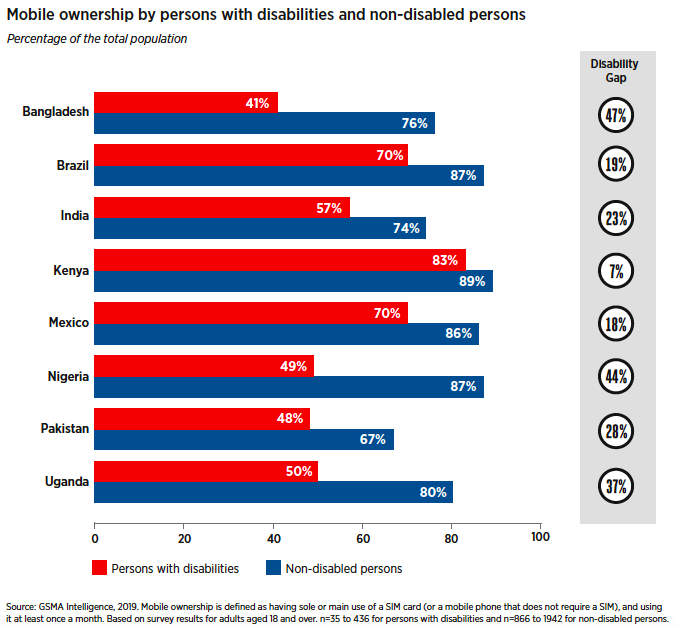
To close the mobile disability gap, there are barriers to mobile ownership that still need to be addressed
Our study identified reasons why people do not own a phone by asking those without a mobile to identify barriers to ownership and to indicate the single most important one. Due to data limitations, we were only able to include five of the eight countries: Bangladesh, Brazil, India, Pakistan and Uganda. The results of the analysis suggest that, while affordability is an important barrier for non-disabled persons, literacy and skills is the top barrier for persons with disabilities in many countries.
To close the mobile disability gap in ownership, these barriers need to be addressed.
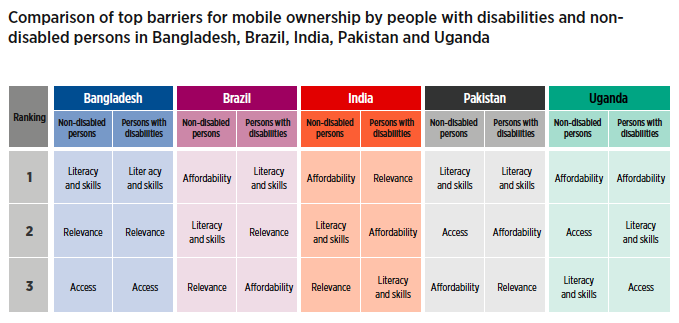
The digital inclusion of persons with disabilities goes beyond mobile ownership – awareness and usage of mobile internet are also important
To gain the full benefits of mobile, people need not only to access a handset, but also the possibility and opportunities to access and use mobile internet, and mobile-enabled services. However, in all markets, fewer persons with disabilities are aware of mobile internet compared to non-disabled persons. This has an impact on the number of people that adopt and use mobile internet.
Across the eight markets studied, persons with disabilities are less likely to be mobile internet users than non-disabled persons. The disability gap in mobile internet use is large and significant in all the countries, including those where the mobile ownership gap is relatively small. For example, Kenya, where the gap in ownership is relatively small, has a disability gap in mobile internet use of 64 per cent. Surprisingly, however, India has a relatively small gap for mobile internet usage. Here the disability gap in ownership is 23 per cent, but persons with disabilities are 17 per cent less likely than non-disabled persons to be mobile internet users.
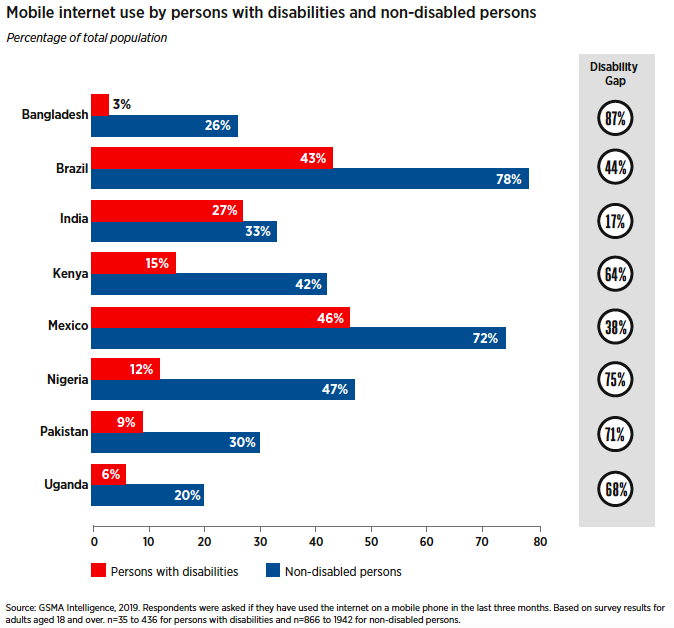
The findings on the mobile disability gap in ownership and mobile internet use suggest that the barriers experienced by persons with disabilities are contextual. By addressing the barriers, persons with disabilities may benefit from mobile in a similar way to non-disabled persons.
The mobile industry commitment to closing the mobile disability gap
On December 3, the International Day of Persons with Disabilities, the GSMA launched the Principles for the Digital Inclusion of Persons with Disabilities (‘The Principles’). The Principles are a framework for action for the mobile industry and are the result of two years of work done by the GSMA Assistive Tech programme in collaboration with industry partners and with the support of disability organisations. Leveraging new data, we have highlighted that more work is needed to close the digital divide and address the barriers faced by persons with disabilities. It is clear that, more than ever, we need to continue to generate data to drive the greater inclusion of persons with disabilities. Together with the Principles, the Mobile Disability Gap Report 2020 aims to highlight evidence and insights on what is needed for the industry, tech players and other stakeholders to take action and leave ‘no one behind’.
The Mobile Disability Gap Report 2020 is based on findings from the GSMA Intelligence Consumer Survey 2019.
